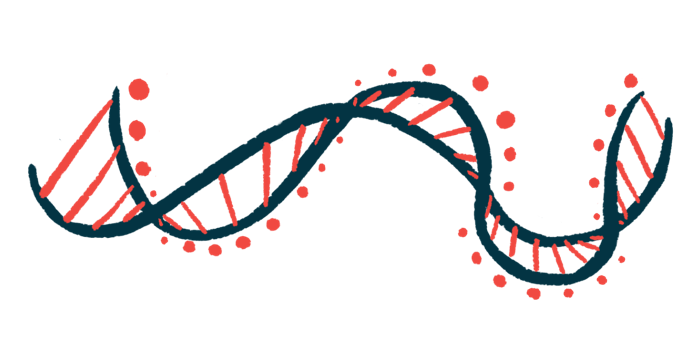Novel Mutation in GJB1 Gene Shown to Cause CMTX in Chinese Family
Relatives with CMT-like features found to carry the same mutation

A novel mutation in the GJB1 gene was found to cause X-linked Charcot-Marie-Tooth disease (CMT) in a new study.
“Our results expand the spectrum of mutations in GJB1 known to be associated with [X-linked CMT] and contribute to the diagnosis of CMT and clinical genetic counseling,” the researchers wrote.
The study, “A novel splicing mutation in 5’UTR of GJB1 causes X-linked Charcot—Marie–tooth disease,” was published in the journal Molecular Genetics & Genomic Medicine.
CMTX accounts for 10%–20% of all CMT cases
X-linked CMT or CMTX, which accounts for 10%–20% of all CMT cases, is caused by mutations in genes carried on the sex-determining X-chromosome — with rare exceptions, women have two X chromosomes, and men have one X and one Y. Mutations in the GJB1 gene are the most common cause of CMTX.
Here, the researchers described the case of a large Han Chinese family that was affected by CMTX.
The family first came to the researchers’ attention when a man attended the Guangzhou Women and Children’s Medical Center for genetic counseling. The man had previously sought medical attention for tremors and muscle wasting in his hands, which made it difficult to hold a pen.
Based on his clinical features, the man had been diagnosed with CMT, but the specific disease-causing gene was not known. The man’s wife had since become pregnant with twins, so he sought genetic counseling hoping to better understand the genetic cause of his disease and the risk of passing it on to his children.
A review of the man’s family tree showed that other relatives, including his mother, several uncles, grandmother, and great-grandfather, had all experienced similar CMT-like disease. Generally, female relatives were less severely affected than males — this is generally indicative of CMTX, since female patients have a second X-chromosome that can partially compensate for the mutated gene.
Our results expand the spectrum of mutations in GJB1 known to be associated with [X-linked CMT] and contribute to the diagnosis of CMT and clinical genetic counseling
Genetic testing discovers novel mutation in GJB1 gene
Genetic testing was performed, revealing a novel mutation in the GJB1 gene referred to as c.-16-8_-14del11. Analyses showed that this mutation segregated with the CMT phenotype in the man’s family. In other words, relatives with CMT-like features carried the mutation, while unaffected relatives did not, indicating the mutation is the cause of the observed disease.
In a battery of further tests using cell models and computer analyses, the researchers determined the precise effect of this mutation.
Like other protein-coding genes, the GJB1 gene is made up of exons — the part of the genetic code that provides instructions for making protein — that are interspersed with non-coding segments called introns. When the gene is “read” to make protein, a temporary copy of the genetic code is made, all the introns are removed, and the exons are stitched together to form the mature protein-coding sequence in a molecule called messenger RNA (mRNA). A process called splicing involves the removal of introns to form mature mRNA.
Findings revealed that the novel mutation was located at an exon-intron junction, and it interfered with the splicing process, ultimately interfering with the production of GJB1 protein. Based on the totality of data, the scientists concluded that this is a novel CMTX-causing mutation in the GJB1 gene.
Genetic testing of the man’s unborn twins revealed that they also carried this mutation.






